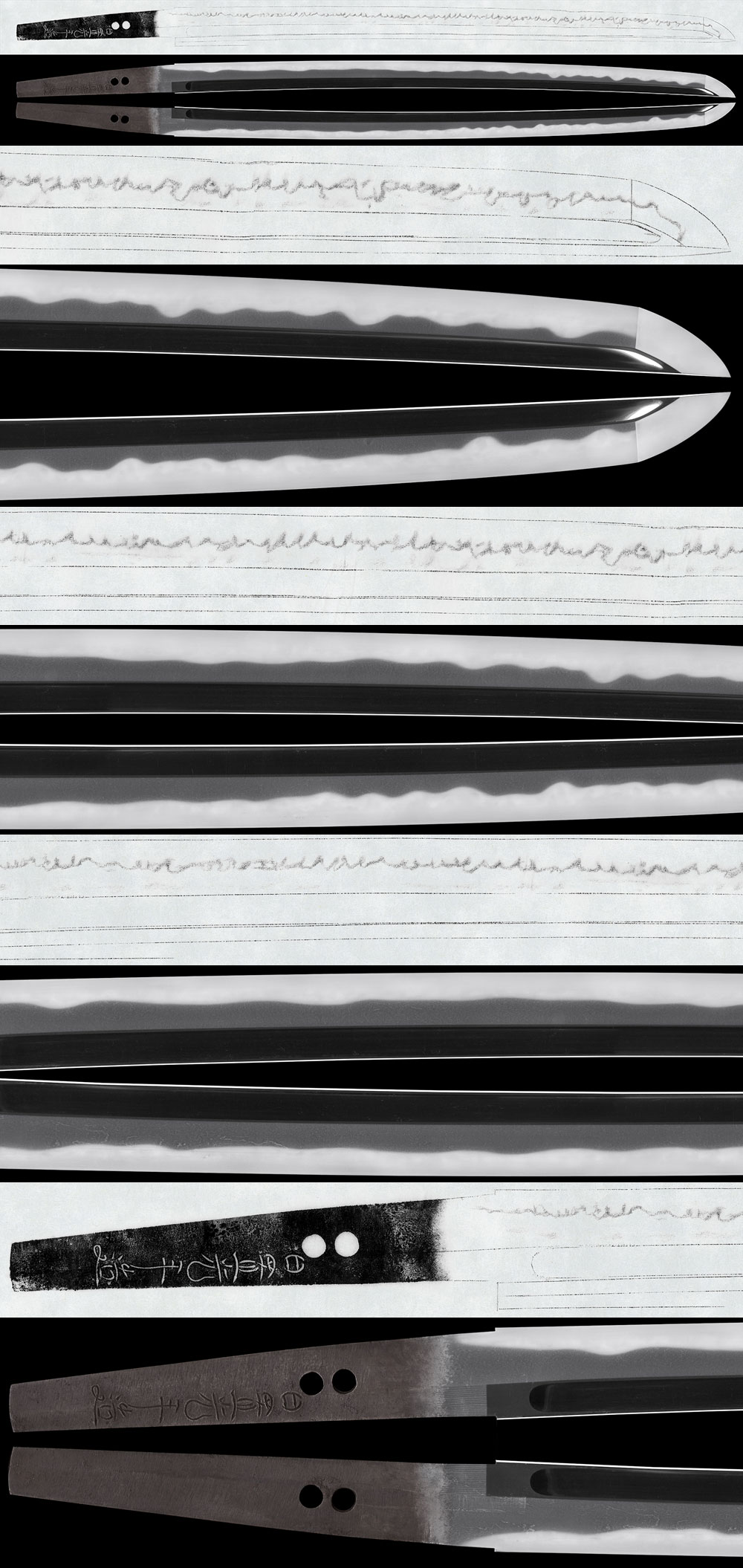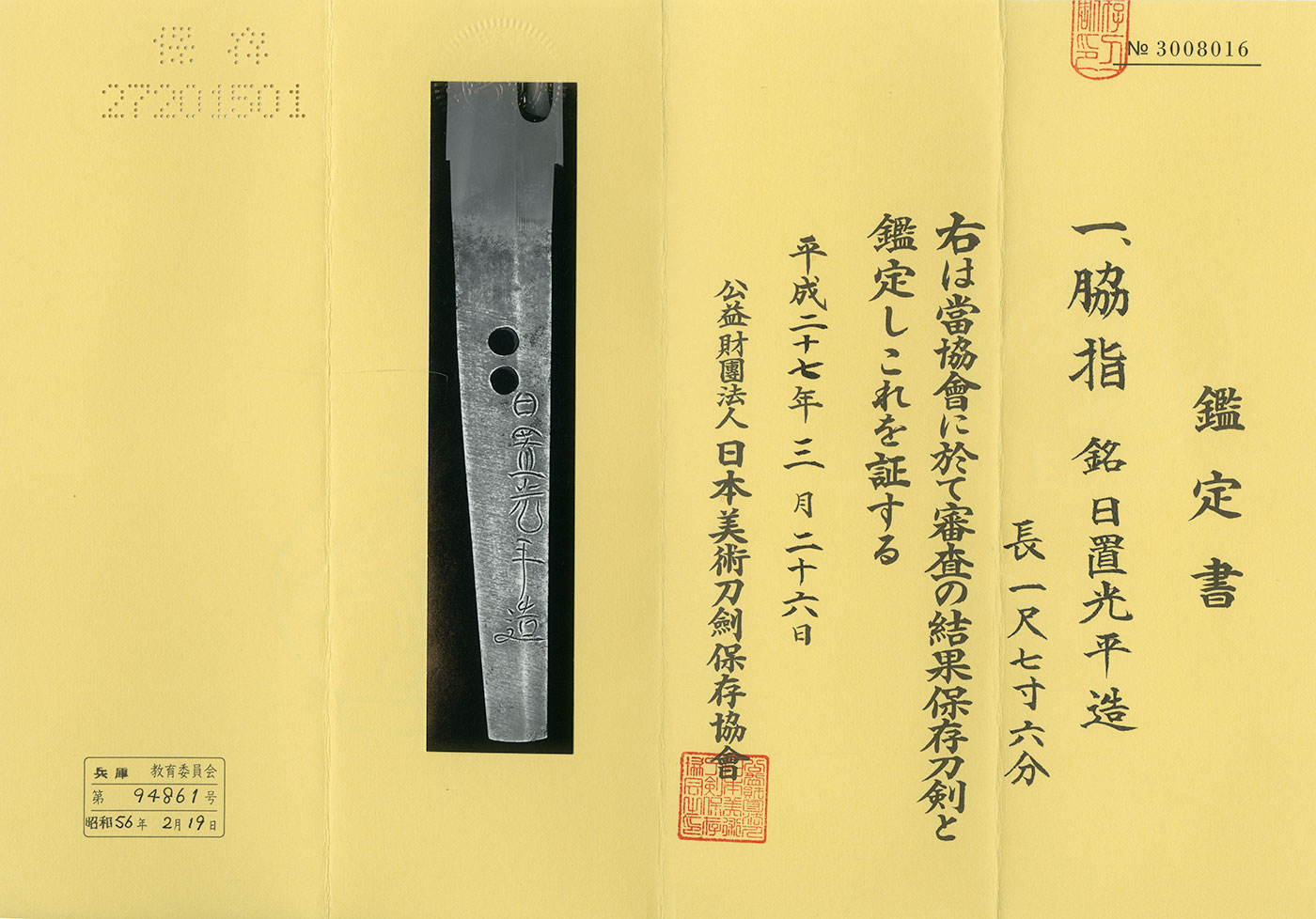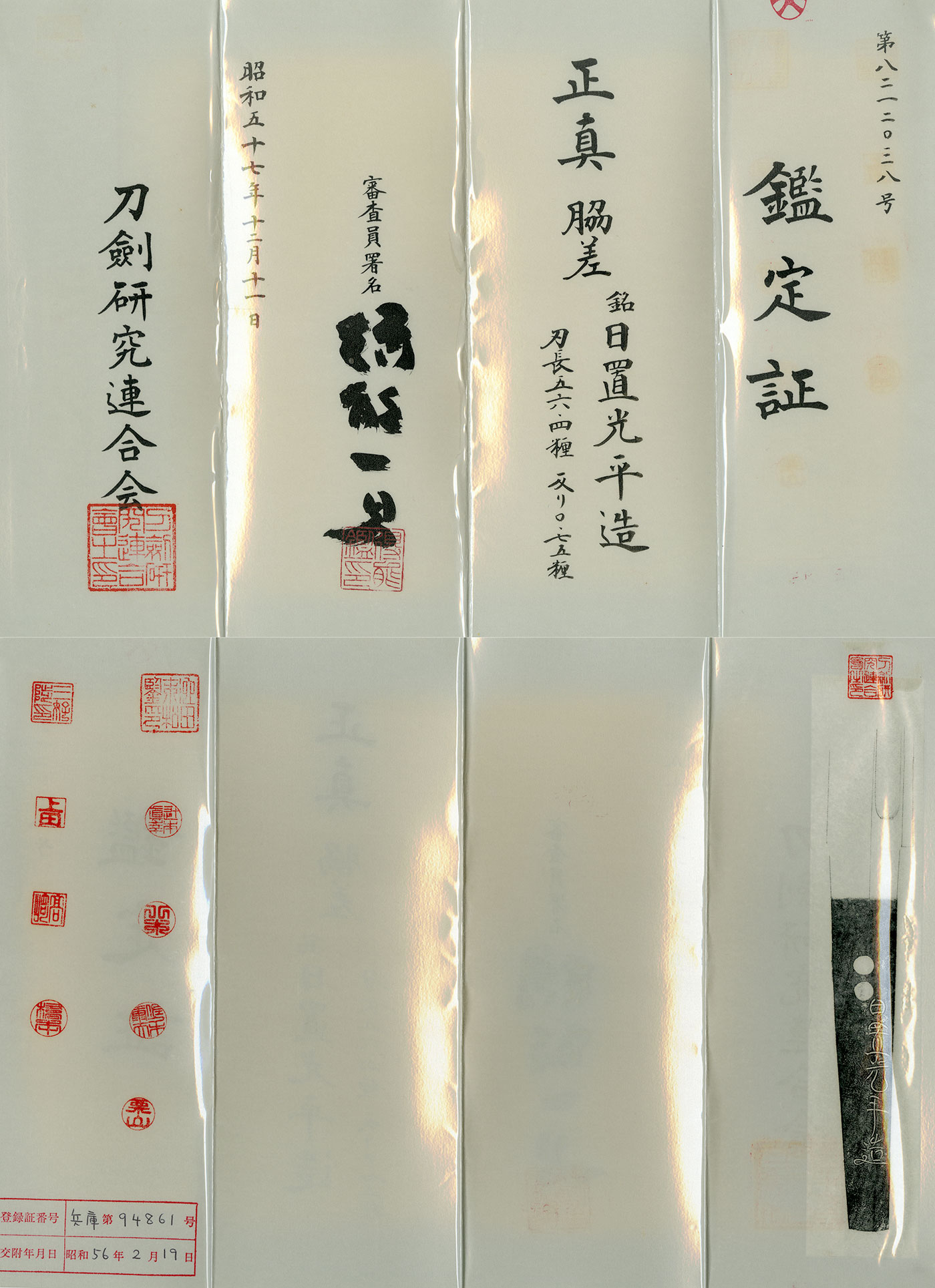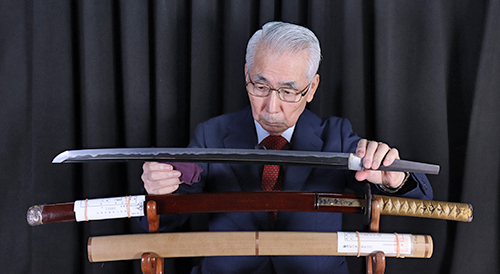Description
Wakizashi in Shirasaya with Koshirae (NBTHK Hozon Token)(Token Kenkyu Rengokai estimation paper)
Signature: Heki Mitsuhira Zo
日置光平造
Shinto: Jyo Saku / Ryo Wazamono / Musashi
We divide 4 sections for each sword as Saijyo Saku, Jyojyo Saku, Jyo Saku, and Regular Saku.
This piece is ranked as Jyojyo Saku among the works of Heki Mitsuhira.
Habaki: Single-layered silver habaki
Blade Length: 56.4 cm (22.20 in)
Curvature: 0.8 cm (0.31 in)
Mekugi Hole: 2
Width at Base (Motohaba): 3.18 cm (1.25 in)
Width at Tip (Sakihaba): 2.22 cm (0.87 in)
Thickness (Kasane): 0.74 cm (0.29 in)
Sword Weight: 545 g
Era: Jo-oh period, Edo era(1652-1655)
Shape:A well-balanced wakizashi with a slightly wide blade, thick kasane, and a noticeable curvature.
The kissaki is extended, and there is a deeply carved bohi on both sides.
Jigane:A finely forged ko-itame-hada with a well-packed, refined muji-style surface.
It displays a beautiful utsuri.
Hamon:A ko-nie-deki, close to nioi-deki, forming a ko-choji-midare pattern with well-formed ko-ashi activities.
The boshi is rounded and returns gently.
Features:The Ishido school from Gamo, Omi province, later moved to Edo, where Mitsuhira, the younger brother of Ishido Joko, received the surname “Heki” and the honorary title “Dewa no Kami.”
He later referred to himself as “Dewa Nyudo.”
After moving to Edo, he specialized in creating choji-midare patterns, striving to revive the Ichimonji style, which gained significant popularity during that period.
Koshirae:Tsuba: Oval-shaped iron tsuba with high-relief carvings of a waterwheel and waves.
Fuchikashira: Iron base with plant motifs, decorated with gold inlay.
Saya (Scabbard): Reddish-brown lacquered saya.
Menuki: Shakudo base with high-relief carvings of acorns, decorated with gold inlay.
Kojiri: Kuri-gata style, iron base with floral motifs.
Kozuka & Small Blade: Copper base with fine engravings, depicting plants and dragonflies in high relief, decorated with gold inlay.
Aoi Art’s Comment:This brings back a personal memory of mine.
During my time purchasing Japanese swords in the United States, I met an elderly man who owned a wakizashi by Mitsuhira.
It was a rare piece, and I strongly desired to purchase it.
Upon visiting his home, I realized that this sword was listed in the Shinto Taikan, page 722.
It bore the inscription:
“Dewa Nyudo Yasunobu Hokkyo Mitsuhira, dated August, Tenwa 2, forged at Matsushiro, Shinshu.”
It was once part of a daisho set, and it became clear that only the katana remained in Japan while the wakizashi had been taken overseas after the war.
His wife kindly prepared a meal for us, and I still vividly remember the gentleman complimenting her, saying,
“Today’s meal is truly delicious.”
Now, regarding this particular piece, it is a long wakizashi, almost resembling a katana.
It is a solidly built sword with a beautiful utsuri in the jigane and a well-executed hamon reminiscent of Yoshioka Ichimonji.
It is an excellent work of Heki Mitsuhira, and the koshirae is also well-crafted.
I highly recommend this piece.
NBTHK Hozon Token
Token Kenkyu Rengokai estimation paper
Aoi Art Estimation Paper
Whole Oshigata









 日本語
日本語






